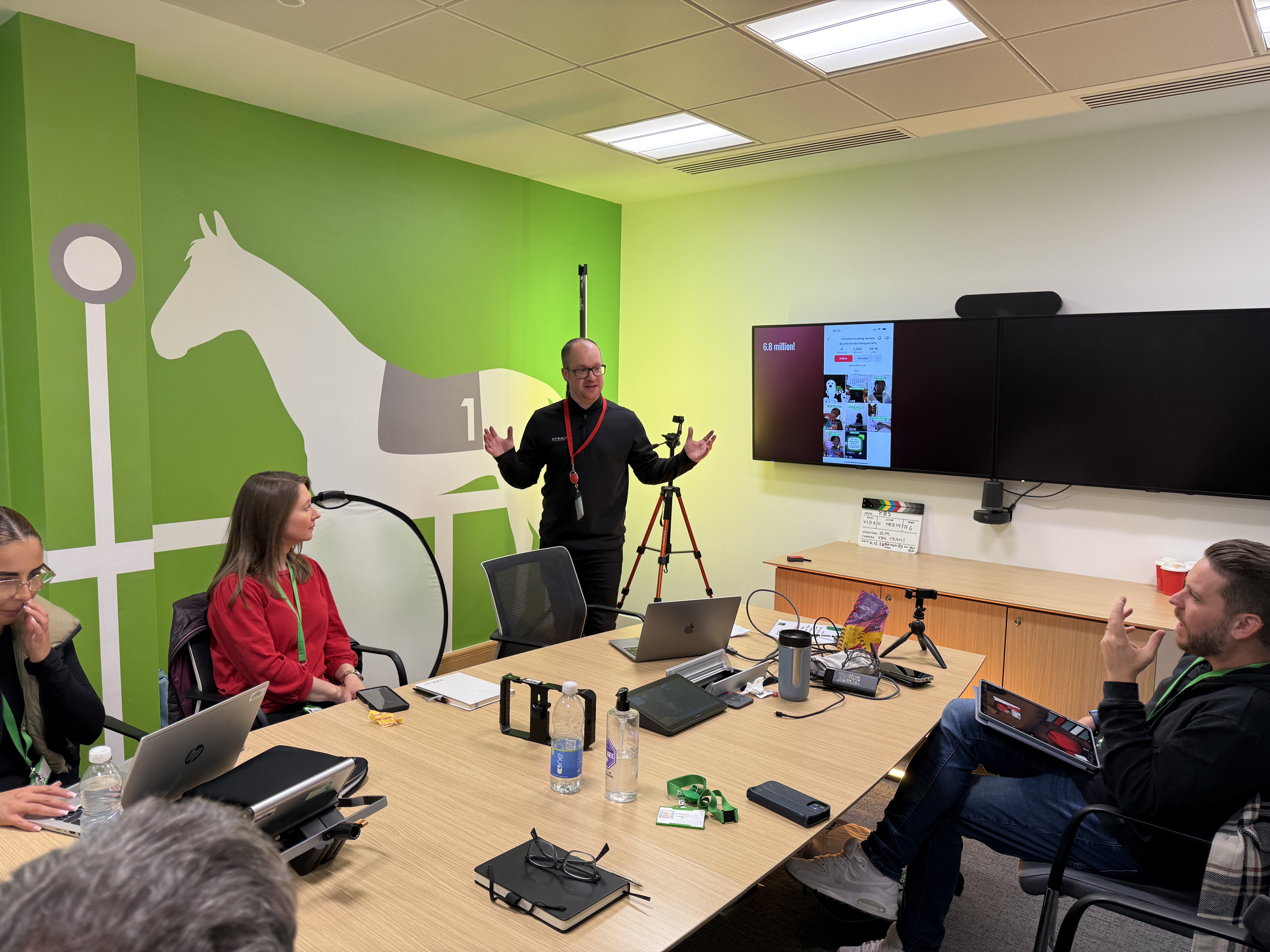How Can I Use My Phone For Filmmaking?

Gone are the days when you needed expensive cameras and bulky equipment to create professional-looking videos.
Your smartphone is now a powerful filmmaking tool, capable of shooting high-quality footage, editing on the go, and even producing entire films.
Whether you’re a content creator, aspiring filmmaker, or business looking to create engaging video content, your phone can do way more than you think.
But how do you get the best results? Here’s everything you need to know about using your phone for filmmaking.
1. Choose the Right Camera Settings
Your phone’s camera is more advanced than ever, but you need to optimise its settings to get the best results.
- Resolution: Shoot in at least 1080p (Full HD), but if your phone allows, opt for 4K for better detail.
- Frame Rate: Use 24fps for a cinematic look, 30fps for social media, or 60fps+ for smooth slow-motion shots.
- Manual Controls: If your phone allows, adjust settings like ISO, white balance, and shutter speed for more control.
- RAW or LOG Recording: Some apps let you shoot in RAW or LOG format for better colour grading in post-production.
Pro Tip: If your phone’s built-in camera app is limited, try third-party apps like FiLMiC Pro, which unlocks professional-level controls.
2. Stabilise Your Shots
Shaky footage is one of the biggest giveaways of amateur filmmaking. To get smooth shots:
- Use a Gimbal: A smartphone gimbal, like the DJI Osmo Mobile or Zhiyun Smooth, stabilises your phone for cinematic movements.
- Try a Tripod: Perfect for static shots, interviews, and time-lapses.
- Handheld Stability: If you don’t have equipment, hold your phone with both hands and move smoothly and deliberately.
Pro Tip: If your footage is still shaky, use in-app stabilisation or software like Adobe Premiere Pro’s Warp Stabilizer.
3. Get the Best Lighting
Lighting can make or break your film. Since smartphones have smaller sensors than professional cameras, they struggle in low light. Here’s how to get better results:
- Natural Light is Your Best Friend: Shoot near windows or outdoors for soft, even lighting.
- Use External Lights: Ring lights, LED panels, or even desk lamps can help brighten your scene.
- Avoid Overexposure: Tap on the screen to adjust brightness and prevent blown-out highlights.
Pro Tip: Film during golden hour (just after sunrise or before sunset) for a warm, cinematic look.
4. Improve Your Audio Quality
Bad audio can ruin a good film, even if the visuals are stunning. Since smartphone microphones aren’t great for filmmaking, invest in better audio solutions:
- External Microphones: A lavalier mic (clip-on), shotgun mic, or USB-C/lightning mic will drastically improve sound quality.
- Use a Second Phone as a Recorder: Record audio separately using a voice recording app and sync it in post.
- Reduce Background Noise: Film in a quiet location and use a windshield if filming outdoors.
Pro Tip: Apps like Dolby On enhance your phone’s audio quality when recording.
5. Use Apps to Edit Like a Pro
Once you’ve shot your footage, you’ll need to edit it into a polished video. Luckily, there are some amazing mobile editing apps available:
- CapCut: Great for quick edits, text, and effects.
- LumaFusion (iOS): Professional-grade editing with multiple layers.
- Adobe Premiere Rush: Easy-to-use but powerful editing on the go.
- VN Editor: A free alternative with great features.
Pro Tip: If you’re editing on a phone, make sure you have enough storage and export in the highest quality possible.
6. Plan Your Shots & Story
Even with the best camera settings and tools, storytelling is key. Before you start filming:
- Create a Shot List: Plan different angles and compositions in advance.
- Use the Rule of Thirds: Frame subjects slightly off-centre for a balanced look.
- Experiment with Camera Angles: Try close-ups, wide shots, and over-the-shoulder perspectives to add depth.
- Think About Transitions: Use natural movement to cut between scenes smoothly.
Pro Tip: A good video isn’t about having the best gear—it’s about how you tell the story.
7. Explore Different Filmmaking Styles
Your phone is capable of shooting various types of content. Here are a few ideas to explore:
- Cinematic Short Films – Use filmic settings, smooth shots, and professional editing.
- Vlogs & Social Content – Shoot handheld with engaging cuts and captions.
- Corporate & Business Videos – Use a tripod, good lighting, and clean audio.
- Music Videos – Experiment with slow motion, creative angles, and effects.
- Documentaries & Interviews – Focus on good audio and steady framing.
Pro Tip: Watch mobile-shot films for inspiration—many award-winning short films have been shot entirely on smartphones!
Filmmaking is no longer limited to those with big budgets and expensive gear. With the right techniques, apps, and creativity, your smartphone can be a powerful filmmaking tool, capable of producing content that looks professional and engaging.
So, grab your phone, start shooting, and bring your creative vision to life!
Want to find out how Shot Blast Media can help? We offer unique video training courses designed to help you film on your smartphone.
Contact us today to find out more:
+44 (0)113 288 3245 | [email protected]

Your Industrial Story
Starts Here
Press The Button. Make The Call. Transform Your Media.

